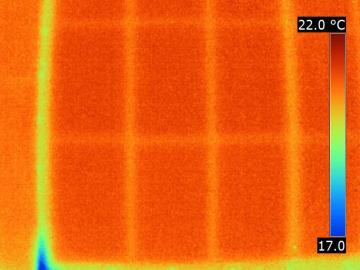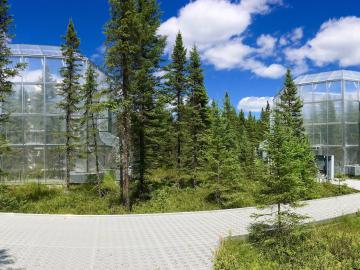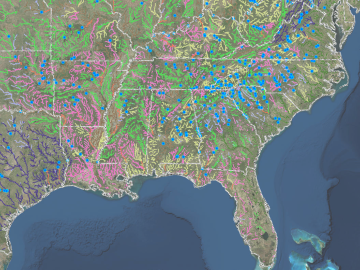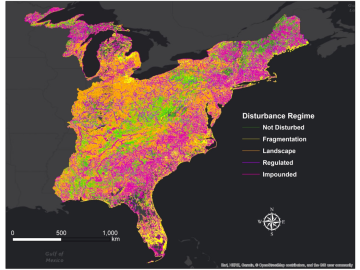
Filter News
Area of Research
- (-) Clean Energy (117)
- Advanced Manufacturing (9)
- Biological Systems (2)
- Biology and Environment (41)
- Building Technologies (3)
- Climate and Environmental Systems (2)
- Computational Biology (2)
- Computational Engineering (2)
- Computer Science (4)
- Electricity and Smart Grid (1)
- Energy Frontier Research Centers (1)
- Fossil Energy (1)
- Fuel Cycle Science and Technology (1)
- Fusion and Fission (14)
- Fusion Energy (2)
- Isotopes (12)
- Materials (67)
- Materials for Computing (18)
- Mathematics (1)
- National Security (9)
- Neutron Science (42)
- Nuclear Science and Technology (15)
- Nuclear Systems Modeling, Simulation and Validation (1)
- Quantum information Science (3)
- Sensors and Controls (3)
- Supercomputing (44)
- Transportation Systems (1)
News Topics
- 3-D Printing/Advanced Manufacturing (26)
- Advanced Reactors (1)
- Artificial Intelligence (1)
- Big Data (3)
- Bioenergy (4)
- Biology (6)
- Biomedical (1)
- Biotechnology (1)
- Buildings (11)
- Chemical Sciences (1)
- Clean Water (1)
- Climate Change (5)
- Composites (5)
- Computer Science (5)
- Coronavirus (2)
- Critical Materials (3)
- Cybersecurity (1)
- Decarbonization (5)
- Energy Storage (21)
- Environment (14)
- Grid (11)
- High-Performance Computing (4)
- Materials (17)
- Materials Science (7)
- Mathematics (1)
- Mercury (1)
- Microscopy (1)
- Nanotechnology (2)
- Net Zero (1)
- Neutron Science (2)
- Nuclear Energy (1)
- Polymers (4)
- Security (3)
- Space Exploration (2)
- Statistics (1)
- Summit (2)
- Sustainable Energy (24)
- Transportation (19)
Media Contacts
Scientists studying a valuable, but vulnerable, species of poplar have identified the genetic mechanism responsible for the species’ inability to resist a pervasive and deadly disease. Their finding, published in the Proceedings of the National Academy of Sciences, could lead to more successful hybrid poplar varieties for increased biofuels and forestry production and protect native trees against infection.


In a project leveraging computer vision, machine learning, and sensors, Oak Ridge National Laboratory scientists are working with private company GRIDSMART Technologies, Inc. to demonstrate how stop lights can be programmed to improve fuel economy and reduce emissions.

Vacuum insulation technology called modified atmosphere insulation, or MAI, could be a viable solution for improving the energy performance of buildings, based on a study by Oak Ridge National Laboratory and industry partners.

Biologists from Oak Ridge National Laboratory and the Smithsonian Environmental Research Center have confirmed that microorganisms called methanogens can transform mercury into the neurotoxin methylmercury with varying efficiency across species.

Mircea Podar has travelled around the world and to the bottom of the ocean in pursuit of scientific discoveries, but it is the uncharted territory he encounters when working with new microbes that inspires his research at ORNL.

A futuristic experiment simulating warmer environmental conditions has shown that peatland vegetation responds to higher temperatures with an earlier and longer growth period.

The construction industry may soon benefit from 3D printed molds to make concrete facades, promising lower cost and production time. Researchers at Oak Ridge National Laboratory are evaluating the performance of 3D printed molds used to precast concrete facades in a 42-story buildin...

Oak Ridge National Laboratory has created new tools to better understand the nation’s waterways and identify potential sites to generate hydropower—a domestic renewable energy resource. The tools allow users such as scientists, resource agencies and industry to access information ab...



